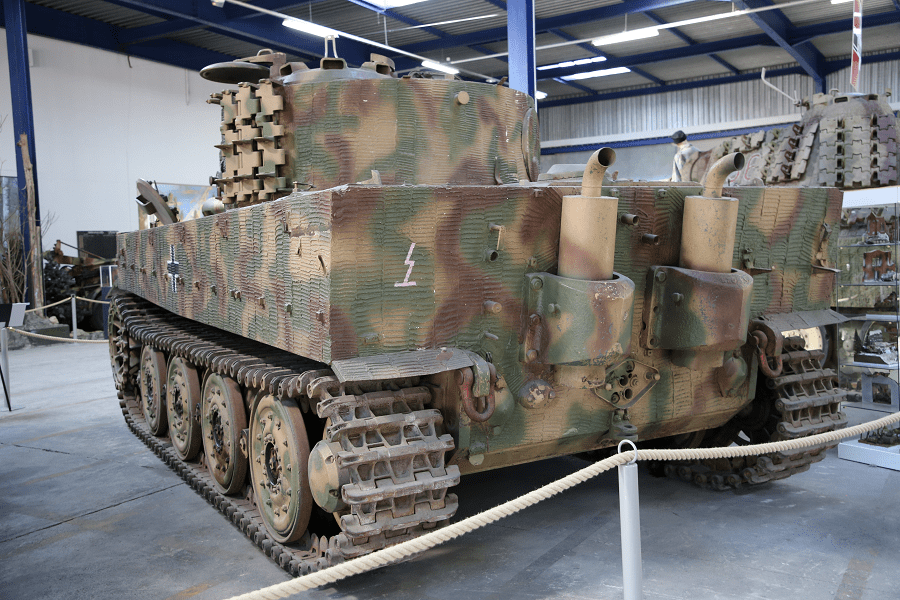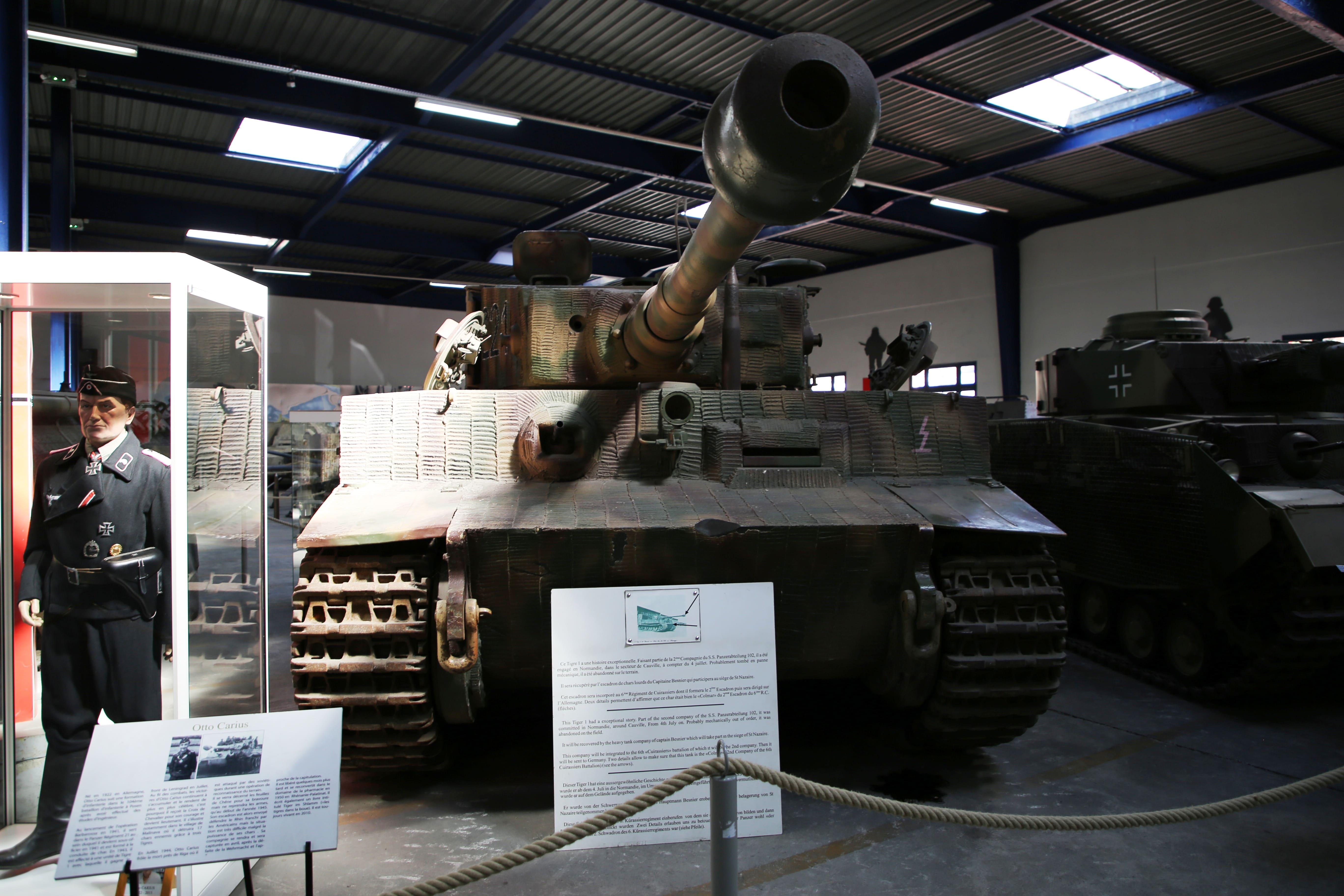The Tiger I was a German heavy tank of World War II that operated beginning in 1942 in Africa and in the Soviet Union, usually in independent heavy tank battalions. It gave the German Army its first armoured fighting vehicle that mounted the 8.8 cm KwK 36 gun (derived from the 8.8 cm Flak 36). 1,347 were built between August 1942 and August 1944. After August 1944, production of the Tiger I was phased out in favour of the Tiger II.
While the Tiger I has been called an outstanding design for its time, it has also been called overengineered, using expensive materials and labour-intensive production methods. In the early period, the Tiger was prone to certain types of track failures and breakdowns. It was expensive to maintain, but generally mechanically reliable.
It was difficult to transport and vulnerable to immobilisation when mud, ice, and snow froze between its overlapping and interleaved Schachtellaufwerk-pattern road wheels, often jamming them solid. This was a problem on the Eastern Front in the muddy rasputitsa season and during periods of extreme cold.
The tank was given its nickname “Tiger” by Ferdinand Porsche, and the Roman numeral was added after the Tiger II entered production. The initial designation was Panzerkampfwagen VI Ausführung H (literally “armoured combat vehicle VI version H”, abbreviated PzKpfw VI Ausf. H) where ‘H’ denoted Henschel as the designer/manufacturer. It was classified with ordnance inventory designation Sd.Kfz. 182. The tank was later re-designated as PzKpfw VI Ausf. E in March 1943, with ordnance inventory designation Sd.Kfz. 181.
Today, only nine Tiger I tanks survive in museums and private collections worldwide. As of 2021, Tiger 131 (captured during the North Africa Campaign) at the UK’s Tank Museum is the only example restored to running order.
The 56-calibre long 8.8 cm KwK 36 was chosen for the Tiger. A combination of a flat trajectory from the high muzzle velocity and precision from the Leitz Turmzielfernrohr TZF 9b sight (later replaced by the monocular TZF 9c) made it very accurate.
In British wartime firing trials, five successive hits were scored on a 410 by 460 mm (16 by 18 in) target at a range of 1,100 metres (3,600 ft). Compared with the other contemporary German tank guns, the 8.8 cm KwK 36 had superior penetration to the 7.5 cm KwK 40 on the Sturmgeschütz III and Panzer IV but inferior to the 7.5 cm KwK 42 on the Panther tank under ranges of 2,500 metres. At greater ranges, the 8.8 cm KwK 36 was superior in penetration and accuracy. The gun took around 10.9 seconds to reload.
The ammunition for the Tiger had electrically fired primers. Four types of ammunition were available but not all were fully available; the PzGr 40 shell used tungsten, which was in short supply as the war progressed.
The rear of the tank held an engine compartment flanked by two separate rear compartments each containing a fuel tank and radiator. The Germans had not developed an adequate diesel engine, so a petrol (gasoline) powerplant had to be used instead. The original engine utilized was a 21.35-litre (1303 cu.in.) 12-cylinder Maybach HL210 P45 developing 485 kW (650 hp) at 3,000 rpm and a top speed of 38 km (24 mph.)
It was found to be underpowered for the vehicle from the 251st Tiger onwards. It was replaced by the upgraded HL 230 P45, a 23.095 litre (1409 cu.in.) engine developing 521 kW (700 hp) at 3,000 rpm. The main difference between these engines was that the original Maybach HL 210 used an aluminium engine block while the Maybach HL 230 used a cast-iron engine block.
Manufacturer: Henschel
Saumur museum of armored vehicles














